1.5 Patterns in Products - NCERT class 7 maths Textbook - Ganita Prakash
1.5 Patterns in Products
“Screen Readable NCERT Class 7 Mathematics Textbook – Ganita Prakash – for Blind and Visually Impaired Students prepared by Professor T K Bansal.”
Roxie and Estu are playing with multiplication. They encounter an interesting technique for multiplying a number by 10, 100, 1000, and so on.
1.5.1 A Multiplication Shortcut
Roxie evaluated 116 × 5 as follows:
116 × 5 = 116 × 10/2
= 58 × 10 = 580.
Estu evaluated 824 × 25 as follows:
824 × 25 = 824 × 100/4 =20600.
Using the meaning of multiplication and division, can you explain why multiplying by 5 is the same as dividing by 2 and multiplying by 10?
Exercise 1.5 - Figure it Out
Question 1.
Find quick ways to calculate these products:
(a) 2 × 1768 × 50
(b) 72 × 125 [Hint: 125 = 1000/8]
(c) 125 × 40 × 8 × 25
Question 2.
Calculate these products quickly.
(a) 25 × 12 = □
(b) 25 × 240 = □
(c) 250 × 120 = □
(d) 2500 × 12 = □
(e) □ × □ = 120000000
1.5.2 How Long is the Product?
In each of the following boxes, the multiplications produce interesting patterns. Evaluate them to find the pattern. Extend the multiplications based on the observed pattern.
11 × 11 = □
111 × 111 =□
1111 × 1111 =□
66 × 61 = □
666 × 661 = □
6666 × 6661 = □
3 × 5 = □
33 × 35 = □
333 × 335 = □
101 × 101 = □
102 × 102 = □
103 × 103 = □
Observe the number of digits in the two numbers being multiplied and their product in each case. Is there any connection between the numbers being multiplied and the number of digits in their product?
Roxie says that the product of two 2-digit numbers can only be a 3- or a 4-digit number. Is she correct?
Should we try all possible multiplications with 2-digit numbers to tell whether Roxie’s claim is true? Or is there a better way to find out?
Figure 1.14

She explains her reasoning: “We want to know about the number of digits in the product of two 2-digit numbers. To know the smallest such product I took 10 × 10, so all other products will be greater than 100.
To know the greatest such product I multiplied the smallest 3-digit numbers (100 × 100) to get 10,000; so, the product of all the 2-digit multiplications will be less than 10,000.”
Can multiplying a 3-digit number with another 3-digit number give a 4-digit number?
Can multiplying a 4-digit number with a 2-digit number give a 5-digit number?
Observe the multiplication statements below. Do you notice any patterns? See if this pattern extends for other numbers as well.
1-digit × 1-digit = 1-digit or 2-digit
2-digit × 1-digit = 2-digit or 3-digit
2-digit × 2-digit = 3-digit or 4-digit
3-digit × 3-digit = 5-digit or 6-digit
5-digit × 5-digit = □ or □
8-digit × 3-digit = □ or □
12-digit × 13-digit = □ or □
1.5.3 Fascinating Facts about Large Numbers
Some interesting facts about large numbers are hidden below. Calculate the product or quotient to uncover the facts. Once you find the product or quotient, read the number in both Indian and American naming systems. Share your thoughts and questions about the fact with your class-mates after you discover each number.
Start of yellow box.
the number of songs composed by Purandaradasa
Figure 1.15
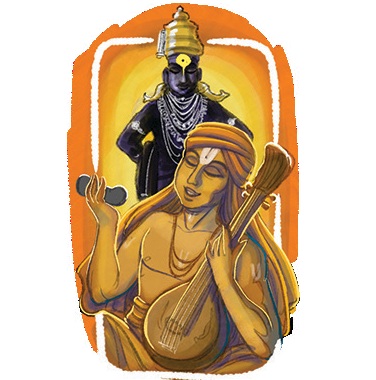
1250 × 380 is the number of kirtanas composed by Purandaradasa according to legends.
Purandaradasa was a composer and singer in the 15th century AD. His kirtanas spanned social reform, bhakti and spirituality. He systematized methods for teaching Carnatic music which is followed to the present day.
How many years did he live to compose so many songs? At what age did he start composing songs?
If he composed 4,75,000 songs, how many songs per year did he have to compose?
End of the yellow box.
Start of blue box.
Approximate distance between the Earth and the Sun.
Figure 1.16
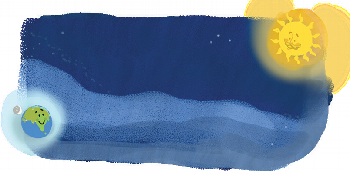
(2100 × 70,000) is the approximate distance in kilometers, between the Earth and the Sun.
This distance keeps varying throughout the year.
The farthest distance is about 152 million kilometers.
How did they measure the distance between the Earth and the Sun?
End of the blue box.
Start of a green box.
The liters of water River Amazon discharges.
Figure 1.17
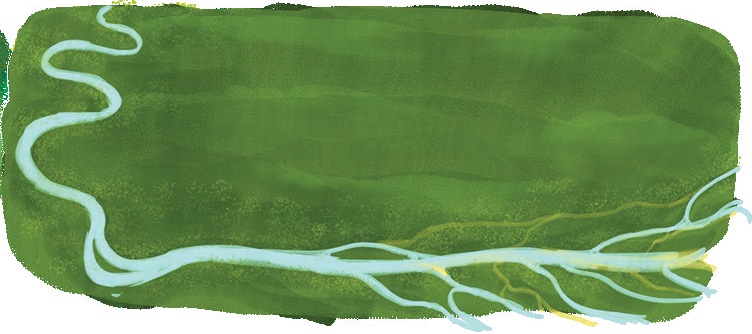
6400 × 62,500 is the average number of liters of water the Amazon River discharges into the Atlantic Ocean every second.
The river’s flow into the Atlantic is so much that drinkable freshwater is found even 160 kilometers into the open sea.
End of the green box.
As you did before, divide the given numbers to uncover interesting facts about division. Share your thoughts and questions with the class after you uncover each number.
Start of a white box.
the longest single-train journey in the world
Figure 1.18
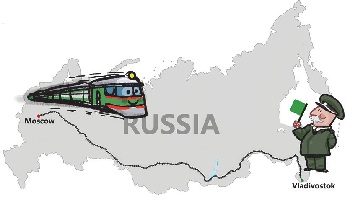
13,95,000 ÷ 150 is the distance (in kms) of the longest single-train journey in the world. The train runs in Russia between Moscow and Vladivostok. The duration of this journey is about 7 days. The longest train route in India is from Dibrugarh in Assam to Kanyakumari in Tamil Nadu; it covers 4219 kms in about 76 hours.
End of the white box.
Start of a blue box.
Weight of an Adult blue whale.
Figure 1.19
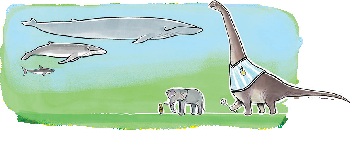
Adult blue whales can weigh more than 10,50,00,000 ÷ 700 kilograms. A newborn blue whale weighs around 2,700 kg, which is similar to the weight of an adult hippopotamus. The heart of a blue whale was recorded to be nearly 700 kg. The tongue of a blue whale weighs as much as an elephant. Blue whales can eat up to 3500 kg of krill every day. The largest known land animal, Argentinosauras, is estimated to weigh 90,000 kgs.
End of the blue box.
Start of a blue box.
weight of global plastic waste generated in a year.
Figure 1.20
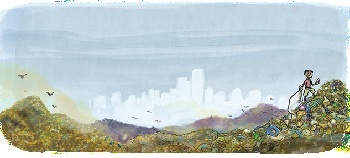
52,00,00,00,000 ÷ 130 was the weight, in tones, of global plastic waste generated in the year 2021.
End of the blue box.
Start of a white box.
Large Number Fact
In a single gram of healthy soil there can be 100 million to 1 billion bacteria and 1 lakh to 1 million fungi, which can support plants’ growth and health.
Share such large-number facts you know / come across with your class.
End of the white box.
